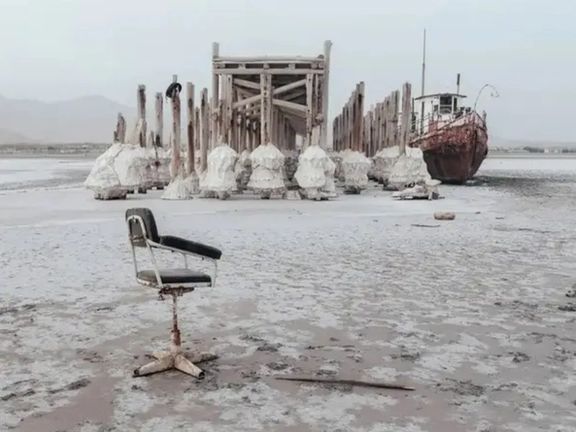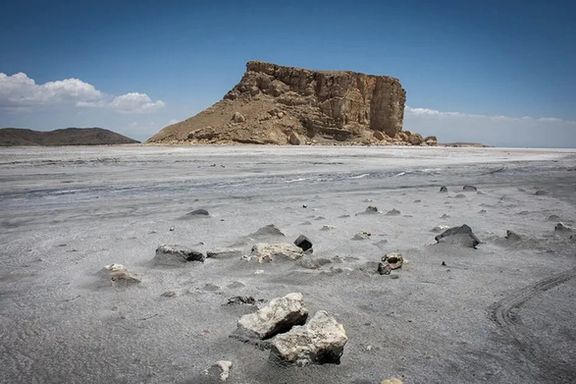Iran's Lake Urmia dries up again, threatening crisis for 5m residents

Once the largest saltwater lake in the Middle East, Lake Urmia has again dried up completely after briefly refilling earlier this spring.

Once the largest saltwater lake in the Middle East, Lake Urmia has again dried up completely after briefly refilling earlier this spring.
The lake, which received nearly one billion cubic meters of water during the winter and spring, has now evaporated, leaving behind an environmental and public health crisis for the nearly five million residents in the surrounding areas.
This marks the second time in recent years that the lake has nearly disappeared. The latest drying occurred despite seasonal efforts to replenish its water levels. Satellite imagery shows a vast white salt crust in both the northern and southern sections of the lake, a sign of extreme evaporation.
The crisis stems from a combination of prolonged droughts, overuse of water by local communities, and poorly planned dam construction along the lake's tributaries, all worsened by the government’s handling of the situation.
Experts attribute the shrinking of Lake Urmia, which has lost nearly 95 percent of its volume over the past 20 years, to excessive and illegal groundwater extraction, as well as diverting water from the once bountiful Zarrineh Rud—one of the lake’s main sources—to irrigate apple orchards.
Earlier, reports had surfaced about a change in the lake’s color. According to Lida Shojaifar, head of the Wetlands Conservation and Restoration Department of West Azarbaijan’s Environmental Protection Agency, the shift was attributed to high temperatures, increased evaporation, and heightened activity of salt-loving bacteria. Shojaifar described the phenomenon as natural and not alarming.

However, the complete drying of Lake Urmia raises concerns about the impact on local agriculture and tourism, which has already been damaged by the lake’s decline. Additionally, dust and salt storms from the lake bed now threaten the health of millions in the region.
The lake’s water level has been in steady decline for years, hitting a historic low of less than 1,270 meters in September 2023, eight meters lower than its peak level recorded in May 1995.
Despite earlier attempts to restore the lake, Arezou Ashrafizadeh, Director of the Wetlands Protection Office, warned in June that the situation remained fragile, even after seasonal water intake. "Despite adequate water intake this spring, Lake Urmia’s condition remains unstable and fragile," Ashrafizadeh said.
The drying of the lake has also reshaped its landscape. The evaporation has caused four of the lake’s southern islands to merge, forming land bridges and disrupting the habitat of local wildlife, including the Persian gazelle and Armenian wild sheep. This new landmass poses risks to both the animals and the delicate ecological balance of the lake’s former islands.
Additionally, the 1,250-meter-long Shahid Kalantari Highway, which bisects the lake, has been cited as a factor exacerbating the lake’s drying. The highway, built across the lake, divides it into northern and southern sections, potentially disrupting its natural flow and ecosystem.

Efforts to restore the lake’s water levels have thus far failed to meet expectations. Earlier plans projected that the water level would reach 1,274.1 meters by 2026. However, its fluctuating levels over the past two decades, driven by inconsistent rainfall and the management of water resources, have affected the lake's depth and topography.
Geological studies indicate that the fluctuations could also be impacting the region’s seismic activity. Two earthquakes, both with a magnitude of six, struck near Salmas in February 2020. More recently, a series of tremors hit Khoy between 2022 and 2024, coinciding with the lake’s drying out. Researchers are investigating the possible link between the seismic events and the lake’s water level changes.